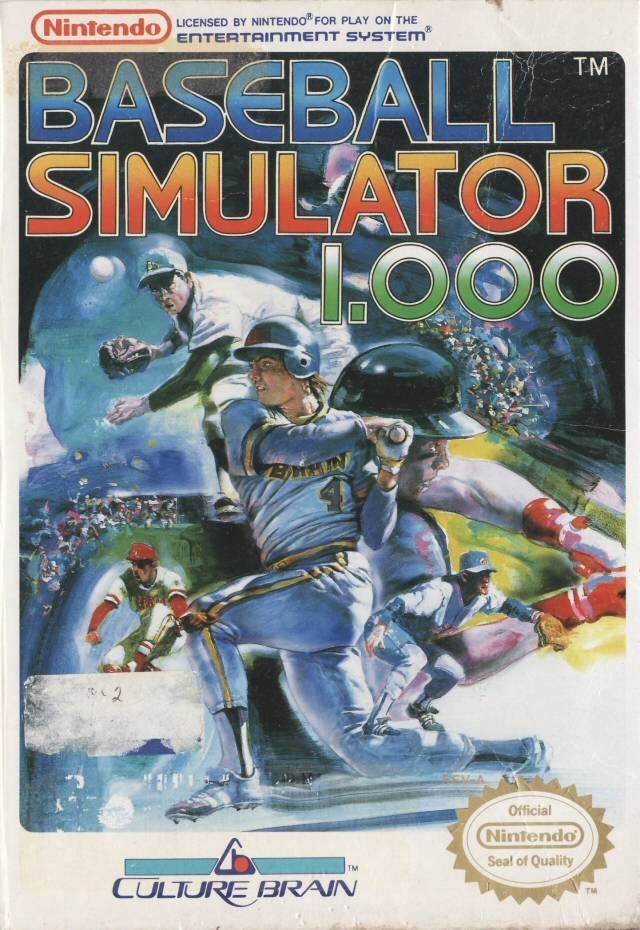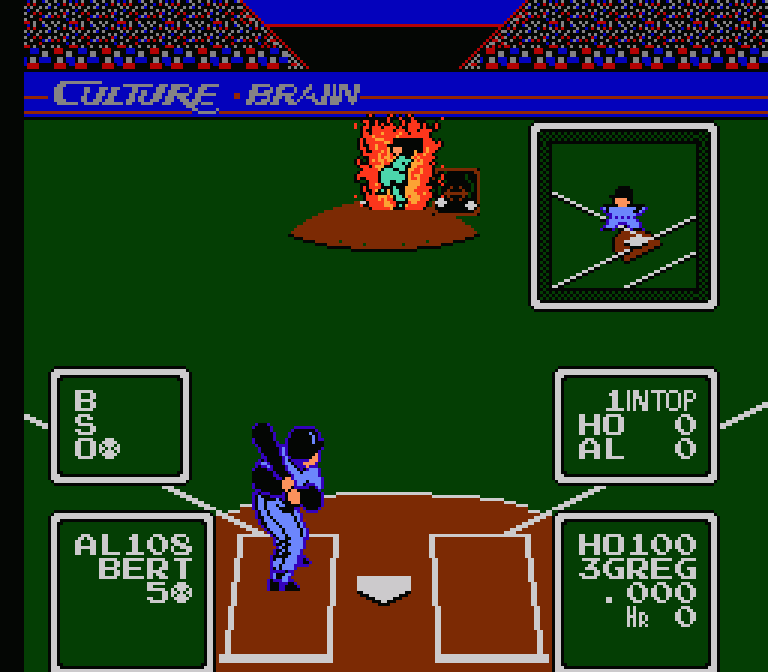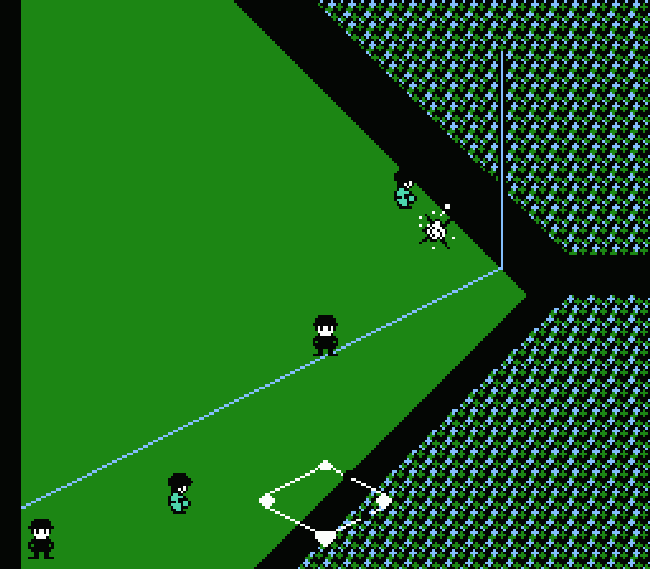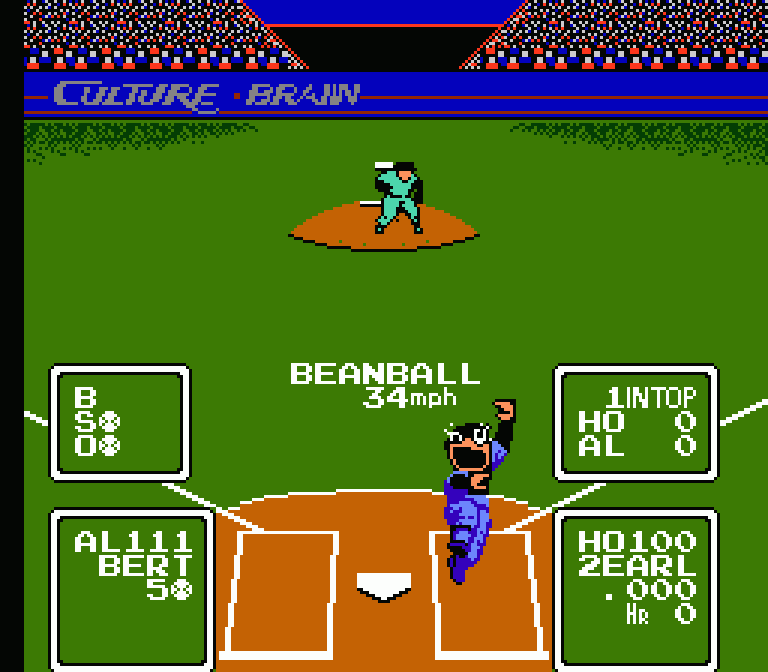Baseball Simulator 1.000 (1989)
Publisher: Culture Brain

Sports games have always been very serious business. Electronic Arts has built an empire (and filled countless discount pre-owned game store bins) on releasing annual NHL, NFL and FIFA titles, each more concerned with exacting versimilitude and a fixation on fantasy-league detail verging on obsessive than the last. Early entries like
Activision Tennis (1981), Konami’s
Track n’ Field (1983), and Nintendo’s
Ice Hockey (1988) lacked personality and self-awareness, although they were undeniably well-designed. Not unlike the flight-sim genre, sports games are practically defined by their dearth of humor.

Considering its name, one might get the impression that
Baseball Simulator 1.000 is the driest of the dry, a game that goes the extra mile to simulate the experience of playing a professional team sport on a home console. This couldn’t be further from the truth. Although there is a fair bit of simulation present, from filling out a team roster to playing through a season, Culture Brain takes so many liberties with the game they purport to be simulating that the end result comes across more like a supercharged satire of baseball than any kind of straightforward depiction. Achieving any kind of realism was not one of Culture Brain’s bullet points when designing
Baseball Simulator 1.000.
On the surface, Baseball Simulator 1.000 is indistinguishable from the majority of baseball games available on the NES: the player selects his team, opts for a season or merely an exhibition game, and then plays through the innings, alternately pitching or batting and running. There are two standard divisions, the Atlantic League and the Northern League, each one comprised of six teams populated by players of varying stats, and a game played according to these guidelines is an entirely satisfactory experience.

It isn’t until one gets into the Ultra League that
Baseball Simulator 1.000 begins to show its true lunacy. Ultra League Teams have access to what amount to baseball superpowers, and making use of these powers transforms the game from a run-of-the-mill sports game into something utterly unexpected. These abilities fall into one of three categories: Ultra Pitches, Ultra Hits and Ultra Fielding. There are ten of the first two and five of the third: Ultra Pitches include Speeder Balls, which allow the player to control the speed of the pitched ball using the up and down arrows on the d-pad; Phantom Balls, which turn invisible as they go over the plate; and Fire Balls, which increase in speed until they burst into flame. Ultra Hits include Shadow Hit, which causes multiple ball shadows to confuse outfielders; Tremor Hit, which turns grounders into earthquakes; and Missile Hits, which catch any outfielders in its path and drives them into the stands. Ultra Fielding includes Rocket Jump, Super Slide and Hyper Throw, which all do exactly what their names suggest.
The end result is like playing softball with the X-Men. Batters hit homer after homer, causing bat fragments to fly around the field, knocking out anyone unlucky enough to get in the way. Balls zoom or inch their way across the plate, dance out of the way at the last second, or vanish without warning. Everyone else on the field is racing around at superhuman speed, leaping a dozen feet into the air, and catching impossible pop flies. It’s pure chaos, and it’s glorious. It’s how, by all rights, baseball should be.
 Baseball Simulator 1.000
Baseball Simulator 1.000 spawned a series of sequels for the Super Nintendo, including
Super Baseball Simulator 1.000 and three
Ultra Baseball Jitsumeiban (or
Real Player Version) games. The latter three were only available in Japan, but other than the inclusion of recognisable players and upgraded graphics, there was little altered from the original. After all, why mess with a winning formula?
| (Baseball Simulator 1.000 was voted “Sports Game Of The Year” by Electronic Gaminig Monthly in 1990. The year previous, another Culture Brain game, The Magic of Scheherezade, received EGM’s “Best Graphics Of The Year” award.)
|





No comments:
Post a Comment